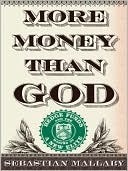More on this book
Community
Kindle Notes & Highlights
Read between
March 19 - August 20, 2019
The truth was that Jones’s trading profits came from agile short-term moves, not from understanding multidecade supercycles whose existence was dubious. Like the traders at Commodities Corporation, Jones was adept at riding market waves; he would get up on his surfboard when a swell seemed to be coming, ready to jump off quickly if the market turned against him. “When you take an initial position, you have no idea if you are right,” he once confessed, undermining the notion that any long-range analysis could explain his success. Rather, as he explained in his more candid moments, his method
...more
Years later, Jones described the mental gymnastics that went into writing these scripts. “Every evening I would close my eyes in a quiet place in my apartment. I would picture myself in the pit. I would visualize the opening and walk myself through the day and imagine the different emotional states that the market would go through. I used to repeat that exercise every day. Then when you get there, you are ready for it. You have been there before. You are in a mental state to take advantage of emotional
What did matter was that Jones visualized the possibility of a crash; he understood that once the market started falling, the chances of a really monster fall were significant.
Because of the way the market was positioned, betting on its decline was irresistible. If the early fall on Friday petered out into nothing, Jones might lose modestly by going short; he would simply close his position and await the next opportunity. But if investor skittishness and portfolio insurance caused the market to crater, the payoff could be enormous. The balance of risk and reward was overwhelmingly attractive.
But Jones had written a script for the market. He was mentally prepared for mayhem.
Even as he rode the market down, Jones seized a second chance to profit. He had been thinking about how the Fed would respond to the collapse, writing a script for the markets as he always did, and he had reasoned that the authorities would seek to calm everybody’s nerves by
pumping cash into the banks to make borrowing cheaper. Here, Jones figured, might be another asymmetrical bet: If the Fed did as he expected, the bond market would soar; but if the Fed did nothing, there was no reason to expect the market to go downward. When the bond market ticked up late on Black Monday, Jones took that as a signal that his script was coming true. He bought the...
This highlight has been truncated due to consecutive passage length restrictions.
also. Everybody scrambled to sell to everybody else. The liquidity was gone. Nobody was buying.
Steinhardt had fallen into a trap that would come to be well known in the new leveraged markets. He had failed to sense when a trade had become crowded. In a world in which a broker’s margin call could force leveraged funds into fire sales, the key was to beware markets in which leveraged players were concentrated.
noticed. The Fed had raised interest rates just twice—by twenty-five basis points in early February and then by the same amount in March—and yet bonds were falling off a cliff; it was the steepest decline in more than a decade.
Over the course of the next decade, Greenspan wrestled with this question, ultimately deciding that using monetary policy to deflate bubbles was a bad idea. Bubbles were hard to identify until after they popped, the Fed chairman maintained, and it was easier to clean up after them than to prick them preemptively.
Macro hedge funds, which had disastrously overestimated the liquidity in currencies and bonds, returned money to their clients rather than waiting to be asked to do so. Paul Tudor Jones handed back a third of his capital to investors, while Bruce Kovner decided in June 1995 to give back two thirds; both cited the difficulty of maneuvering in and out of markets with too much capital. A month after Kovner’s announcement, Soros wrote a letter to Quantum’s investors, blaming recent disappointments on the same problem of size. Macro investing was now contemptuously dubbed “leveraged directional
...more


